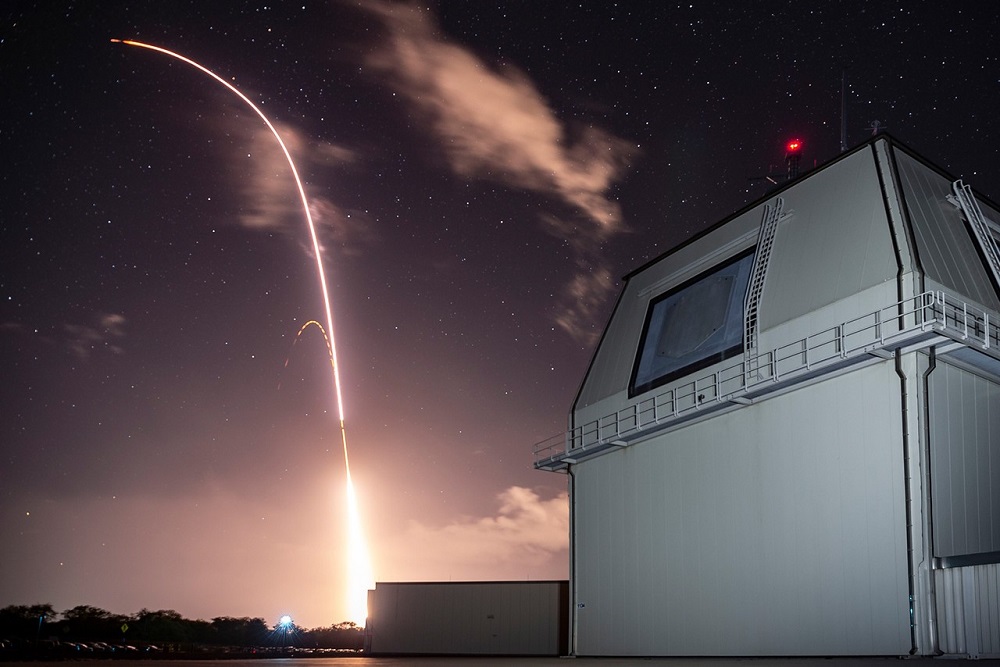
Without informing its US ally, Japan this week abruptly put on hold the planned deployment of two Aegis Ashore systems that were intended to bolster its defences against North Korean and Chinese missiles. Some commentators were quick to denounce the decision, arguing it would reduce Japan’s defence capability and strain the US–Japan alliance.
Not only are those risks overstated, but Tokyo’s action is also prudent for domestic, operational, strategic and alliance-management reasons. In fact, it’s crucial in what it says about Japan’s emerging response to a new strategic environment and the flawed approach to allied ‘burden-sharing’ under President Donald Trump.
Japan approved plans to purchase two Aegis Ashore systems at the end of 2017. A land-based version of the ship-based Aegis ballistic missile and air defence system, Aegis Ashore is capable of operating Standard Missile 3 and Standard Missile 6 interceptors.
The acquisition was seen by some analysts as a milestone in a more robust Japanese defence posture against North Korean and Chinese missile threats. Pyongyang’s launches in August and September 2017 of two nuclear-capable Hwasong-12 intermediate-range ballistic missiles over Japanese territory appeared to demonstrate the necessity for such systems. But the decision was also an attempt by Prime Minister Shinzo Abe’s government to accommodate Trump’s pressure for greater burden-sharing in the early days of his administration.
However, since then the program has run into domestic problems. Severe local opposition to Aegis Ashore in Akita, in Japan’s north, led the Abe government to scrap plans to deploy it there last month. Yet, the second planned site in the southwestern prefecture of Yamaguchi had also already met with residents’ disapproval.
The program’s price tag has ballooned from an estimated US$2.15 billion in 2017 to more than US$4 billion. And Tokyo was reportedly not informed that it would have to pay for missiles launched in Hawaii to test the system’s radar. Finally, the Abe government says it only learned in May that significant technical modifications would be required to reduce the risk of the rocket booster falling into populated areas. Domestically, therefore, putting the Aegis Ashore procurement on ice ends a political liability for the Abe government.
It’s also sensible to forgo the Aegis Ashore deployment from a Japanese operational and strategic perspective. Despite what ballistic missile defence enthusiasts might claim, it’s a defensive, static land-based system whose effectiveness against a sophisticated missile threat from China or North Korea is highly questionable.
Japan’s expensive preoccupation with missile defence systems has already put a heavy burden on its navy’s Aegis destroyers, which nevertheless should still be able to cope with a potential North Korean attack.
But to better deal with the emerging military challenge from China, which is the real problem for Japan, its defence force would be far better off investing in more flexible offensive capabilities designed to complicate China’s (and North Korea’s) planning and operations, including mobile strike systems, hypersonic missiles, space assets and submarines. Rather than pursuing Aegis Ashore in a ‘sunk cost’ approach, the Japan Self-Defense Force could now reinvest the money in other, more urgent capability areas.
Japan’s decision also sends a clear message to the US about its position on future alliance relations. The Trump administration’s relentless insistence that Japan pay more for hosting US troops on its territory in exchange for protection is likely to have unintended consequences.
Tokyo has undoubtedly been watching Washington’s attempts to push both its South Korean and German allies around through blatant public threats about troop withdrawals if they don’t increase their defence spending. This approach is based on a fundamental misunderstanding: US allies, including Japan, are acutely aware that in the emerging strategic competition with China and Russia, America needs its allies more, not less. Repeated public US demands to ‘do more’ are no longer sufficient to persuade or even coerce allies, if they ever were.
Tokyo has learned by now that appeasing Trump through the purchase of expensive defence equipment such as Aegis Ashore and the F-35 fighter hasn’t worked. Instead, he has come back to ask for more.
But in this new strategic environment and in the context of upcoming negotiations with the US about Japan’s ‘host nation’ support, Tokyo is likely to take a harder line. The Aegis Ashore system could then be used as a bargaining chip for Tokyo in discussions about future burden-sharing within the alliance. Alternatively, Japan could offer its financial and technical cooperation to the US on other military systems of interest.
As the US will find out, pushing allies to ‘do more’ comes with a price tag as these nations become more inclined to push for greater autonomy about their defence decision-making, including on weapon systems. Japan is no exception. Indeed, Tokyo’s decision to cancel the Aegis Ashore acquisition for now without prior consultation with Washington is very much a case in point.

